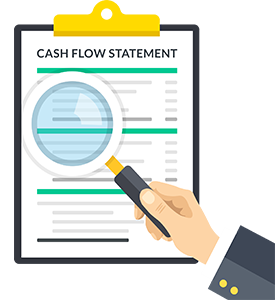 You may have started your business as a simple sole proprietorship that files its taxes as a Schedule C on your Form 1040. As your business grows, you may want to change the structure. Here are several scenarios where it may make sense to do just that.
You may have started your business as a simple sole proprietorship that files its taxes as a Schedule C on your Form 1040. As your business grows, you may want to change the structure. Here are several scenarios where it may make sense to do just that.
Reasons to Create Business Entities
- Establishing limited liability. The primary reason businesses form corporations and limited liability companies is to create a separate legal entity that provides legal protection. If your business receives a legal summons for a claim, for example, having limited liability may protect your personal assets like your home and car.
- Hiring your first employee. Businesses are generally liable for their employees’ actions taken on behalf of the company. If an employee performs an act that causes an outside party to sue your business, the outside party can come after your personal assets to satisfy the lawsuit if you don’t have limited liability. You should, therefore, incorporate your business if you anticipate hiring your first employee in the near future.
- Establishing credibility. Having LLC or Inc. after your business’s name conveys maturity in your business to customers and vendors.
- Accessing credit and/or capital. Incorporating can also make it easier for your business to obtain financing through banks or investors. Banks want to see that your business is legitimate and not simply a hobby. Bringing in investors also requires a business form that allows you to do this. Individuals often co-mingle personal funds with business activity, making it hard to consider lending money.
What you need to do
There are several different business entities to consider, including corporations and limited liability companies. There are pros and cons to each entity that must be considered. Added to the complexity are constructing the correct legal filings and related tax obligations for sales tax, income taxes, unemployment and workers’ compensation.
The process of selecting the right structure for your business is not for the faint of heart. Develop connections with professionals that can walk you through this decision-making process.
 When tracking and planning your business objectives, it’s easy to focus your analysis on two reports — the income statement and balance sheet. But one of the primary keys to your business’s success relies more on how you handle the money flowing in and out of the business. The appearance of a solid profit can hide a lurking cash flow problem.
When tracking and planning your business objectives, it’s easy to focus your analysis on two reports — the income statement and balance sheet. But one of the primary keys to your business’s success relies more on how you handle the money flowing in and out of the business. The appearance of a solid profit can hide a lurking cash flow problem.
Here are practices to help you give your cash flow the attention it deserves:
- Understand your cash position. Start with simply getting in the habit of monitoring your bank account activity daily to watch for mistakes or unforeseen charges. Then look at each business process that involves cash — purchasing, inventory, collections and payroll are good examples. Consider extending terms for paying vendors, establishing shorter terms for customers to pay and implementing a review process to ensure accurate payroll calculations. Also explore opportunities to turn over your inventory faster.
- Create a cash flow statement forecast. With your knowledge of cash, create a forward-looking statement of monthly cash flow. It will reflect the ebbs and flow of cash throughout the year and identify times of cash crunch. You can then see the impact of changes you are making on your company’s cash position.
- Identify relevant ratios. There are many helpful cash flow ratios. Identify ratios that are especially helpful to your business. Have debt? Consider the cash flow coverage ratio (operating cash flow ÷ by debt) to help plan for scheduled debt payments. Making a lot of capital purchases? Use the free cash flow calculation (operating cash flow – capital expenditures) to determine how much cash will be left over after the purchases.
- Build in some contingencies. Most businesses experience seasonality. Understanding your business cycles can help you strategically manage cash in high cash months to cover shortfalls that come in low cash months. Set up a line of credit so it’s available in the case of an emergency, or as a bridge during short-term liquidity needs. A line of credit only charges interest only when used, so it’s a perfect tool to have at your disposal.
- Watch for hidden cash hijackers. Oftentimes, large cash expenditures can be hidden on your income statement or balance sheet. A few examples are payments on capital purchases, debt obligations, dividends, guaranteed payments to partners and taxes. Income taxes, when not accounted for correctly, can cause a twofold problem — a large lump sum that is due in a short amount of time, plus a larger obligation to account for going forward. Don’t wait until the end of the year to project your tax provision.
- Appoint someone to manage cash. As with many business processes, important details can fall through the cracks if there is not clear accountability as to who is responsible for the task. So assign yourself or someone you trust to manage the company’s cash flow.
When businesses fail, it’s usually because they run out of money. By making cash flow a central part of your business plan, you greatly reduce this risk.
When you sell an asset or investment, your cost basis – the amount you originally paid for it – is subtracted from the sales price to determine your capital gain on the sale:
Price Sold At – Cost Basis (Price Paid For) = Capital Gain
Do you take this cost basis into account when it’s time to sell an asset or investment? If your last tax return included some surprises on capitals gains that you incurred during the year – and the related taxes to that capital gain – then you’re probably aware of the need to plan ahead when buying or selling assets or investments. It’s even more important in light of some recent tax law changes, including the new tax on net investment income.
Be proactive about your asset or investment sales as well as the tax implications of your capital gains.